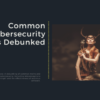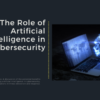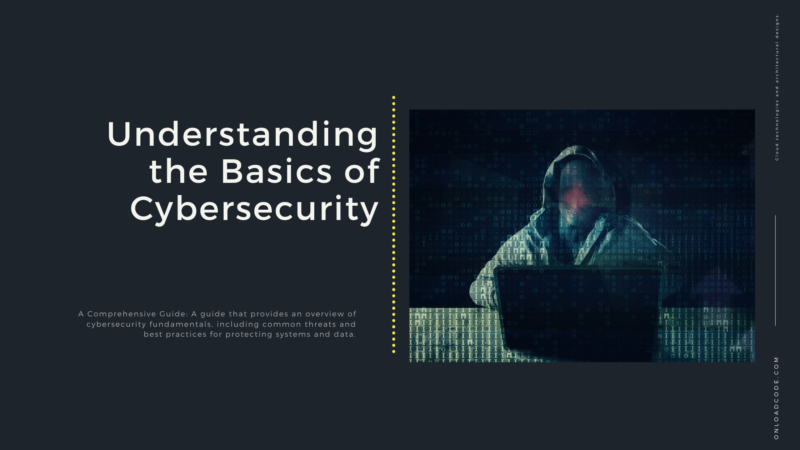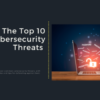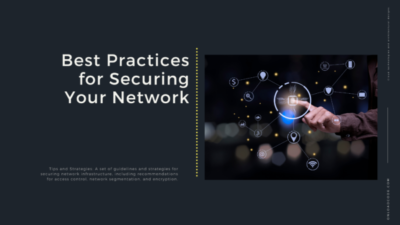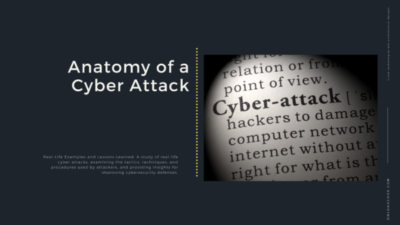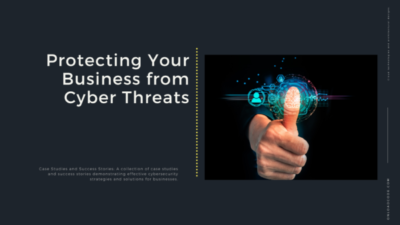“Understanding the Basics of Cybersecurity: A Comprehensive Guide” is a comprehensive article that covers the essential concepts of cybersecurity, providing readers with a solid foundation of knowledge to protect themselves and their organizations from cyber threats. From the fundamentals of the CIA triad and risk management to practical advice on network security, data protection, and application security, this guide offers insights and best practices for anyone looking to navigate the complex landscape of cybersecurity. The article also explores emerging trends and technologies in the field, emphasizing the importance of staying up to date in a rapidly changing threat landscape.
This is the 1st article on the Cybersecurity: Securing the Digital Landscape series. In this article, we are discussing the Basics in Cybersecurity.
Introduction to Cybersecurity
In today’s digital world, cybersecurity has become a critical concern for individuals and organizations alike. Cybersecurity is the practice of protecting electronic devices, systems, and networks from unauthorized access, theft, and damage. It encompasses a range of activities, including risk management, network security, data protection, application security, and end-user security.
Defining Cybersecurity: What It Is and Why It Matters
Cybersecurity is the practice of protecting electronic devices, systems, and networks from unauthorized access, theft, and damage. This includes protecting sensitive information such as personal data, financial information, and trade secrets. Cybersecurity threats can come from a variety of sources, including hackers, malware, and insiders. A cybersecurity breach can have serious consequences, including financial loss, reputational damage, and legal liability.
For example, in 2017, the Equifax data breach exposed the personal information of over 147 million people, including names, Social Security numbers, birth dates, and addresses. The breach was the result of a vulnerability in the company’s software, which was not patched in a timely manner. The incident cost Equifax millions of dollars in fines and legal fees and resulted in significant reputational damage.
Understanding the Threat Landscape: Common Cybersecurity Risks and Challenges
Cybersecurity risks are constantly evolving, and it is essential to stay up to date on the latest threats and challenges. Some of the most common cybersecurity risks and challenges include:
- Malware: Malware is malicious software designed to damage or disrupt computer systems. Common types of malware include viruses, worms, and Trojan horses.
- Phishing: Phishing is the practice of sending fraudulent emails or messages that appear to be from a trusted source in an attempt to trick the recipient into revealing sensitive information such as passwords or financial information.
- Ransomware: Ransomware is a type of malware that encrypts a victim’s files and demands payment in exchange for the decryption key.
- Social engineering: Social engineering is the use of deception to manipulate individuals into divulging confidential information. This can include tactics such as pretexting, baiting, and tailgating.
- Insider threats: Insider threats are threats that come from within an organization, such as employees who have access to sensitive information.
For example, in 2020, the SolarWinds breach exposed the networks of numerous government agencies and private companies. The breach was the result of a sophisticated supply chain attack, in which hackers gained access to SolarWinds software and used it to deploy malware on client systems. The incident highlighted the growing threat posed by supply chain attacks and the need for organizations to take a comprehensive approach to cybersecurity.
Understanding the basics of cybersecurity is essential for anyone looking to protect themselves and their organizations from cyber threats. By defining what cybersecurity is and understanding the threat landscape, individuals and organizations can take steps to mitigate risks and stay ahead of evolving threats.
Foundations of Cybersecurity
Cybersecurity is built on a foundation of key principles and practices that help organizations protect their networks, data, and systems. In this section, we will explore some of the foundational concepts of cybersecurity, including the CIA Triad, risk management, and security frameworks.
The CIA Triad: Confidentiality, Integrity, and Availability
The CIA triad is a fundamental concept in cybersecurity that represents three key objectives for information security: confidentiality, integrity, and availability. Confidentiality refers to the protection of sensitive information from unauthorized access or disclosure. Integrity refers to the assurance that information is accurate and has not been tampered with. Availability refers to the assurance that information is accessible to authorized users when needed.
For example, a healthcare organization must protect patient data (confidentiality) from unauthorized access or disclosure, ensure that medical records are accurate (integrity), and make sure that doctors and nurses can access patient information when needed (availability).
Risk Management: Identifying, Assessing, and Mitigating Cyber Threats
Risk management is the process of identifying, assessing, and mitigating risks to an organization’s information assets. This process involves identifying potential threats, assessing the likelihood and impact of those threats, and implementing controls to reduce or eliminate the risk.
For example, a financial institution may identify the risk of a phishing attack, assess the likelihood and impact of the attack, and implement controls such as training employees to recognize and report suspicious emails.
Security Frameworks: Industry Standards and Best Practices
Security frameworks provide a comprehensive set of guidelines and best practices for organizations to follow in order to ensure effective cybersecurity. These frameworks are often based on industry standards and best practices and are used to establish a baseline of security measures.
For example, the National Institute of Standards and Technology (NIST) Cybersecurity Framework provides a set of guidelines and best practices for organizations to manage and reduce cybersecurity risk. The framework is designed to help organizations identify and prioritize their cybersecurity needs, assess their current cybersecurity posture, and implement a plan to improve their security posture over time.
The foundations of cybersecurity are built on key principles and practices that help organizations protect their networks, data, and systems. By understanding the CIA Triad, risk management, and security frameworks, organizations can establish a strong foundation for their cybersecurity efforts and mitigate the risk of cyber threats.
Network Security
Network security is a critical component of cybersecurity, as it focuses on protecting an organization’s network infrastructure from external and internal threats. In this section, we will explore some of the key tools and technologies used in network security, including firewalls, intrusion detection and prevention, and virtual private networks (VPNs).
Firewalls: Protecting Your Network from External Threats
A firewall is a network security tool that monitors and controls incoming and outgoing traffic based on a set of predefined rules. Firewalls can be hardware, software, or cloud-based and are designed to prevent unauthorized access to an organization’s network.
For example, a company may use a firewall to block traffic from known malicious IP addresses or to prevent employees from accessing certain websites or services during work hours.
Intrusion Detection and Prevention: Identifying and Stopping Malicious Activity
Intrusion detection and prevention systems (IDPS) are tools that monitor network traffic for signs of malicious activity, such as attempted attacks or unauthorized access. IDPS can be used to detect and prevent a variety of threats, including viruses, worms, and malware.
For example, an IDPS may identify an attempted SQL injection attack on a web application and take action to prevent the attack from succeeding.
Virtual Private Networks (VPNs): Securing Remote Access
A virtual private network (VPN) is a secure connection between a remote device and a corporate network or the internet. VPNs encrypt traffic between the remote device and the network, providing a secure way for remote employees to access corporate resources.
For example, an employee working from home can use a VPN to securely connect to the company’s network and access files or applications as if they were working in the office.
Network security is a critical component of cybersecurity, and firewalls, intrusion detection and prevention, and virtual private networks are essential tools for protecting an organization’s network infrastructure. By implementing these tools and technologies, organizations can mitigate the risk of cyber threats and ensure the confidentiality, integrity, and availability of their network resources.
Data Protection
Data protection is a critical aspect of cybersecurity, as it involves safeguarding an organization’s data from unauthorized access, use, disclosure, disruption, modification, or destruction. In this section, we will explore some of the key tools and technologies used in data protection, including encryption, access controls, and backup and recovery.
Encryption: Keeping Your Data Safe and Secure
Encryption is the process of converting data into a secure code to prevent unauthorized access or use. Encrypted data can only be accessed with a decryption key, which ensures that only authorized individuals can access the data.
For example, an organization may use encryption to protect sensitive customer data, such as credit card numbers or social security numbers, during transmission or storage.
Access Controls: Restricting Access to Sensitive Information
Access controls are security measures that restrict access to sensitive information or resources based on user roles, permissions, or other criteria. Access controls can be implemented at various levels, including physical, logical, and administrative.
For example, an organization may use access controls to limit access to a financial database to only authorized employees with a need-to-know basis.
Backup and Recovery: Planning for the Unexpected
Backup and recovery involves creating and storing copies of data to ensure that it can be restored in the event of data loss or corruption. Backup and recovery plans typically include procedures for regular backups, offsite storage, and testing of backups to ensure they can be restored.
For example, an organization may use a backup and recovery plan to recover from a ransomware attack by restoring data from a backup copy.
Data protection is a crucial aspect of cybersecurity, and encryption, access controls, and backup and recovery are essential tools for safeguarding an organization’s data. By implementing these tools and technologies, organizations can ensure that their data remains safe and secure, even in the face of cyber threats or unexpected events.
Application Security
Application security refers to the process of designing, developing, and testing applications to ensure that they are free from security vulnerabilities and can withstand cyber attacks. In this section, we will explore some of the key tools and techniques used in application security, including secure coding, vulnerability scanning and penetration testing, and web application firewalls.
Secure Coding: Writing Applications with Security in Mind
Secure coding involves developing applications with security in mind from the outset, rather than trying to patch security holes after the fact. Secure coding practices include using secure coding frameworks, following secure coding guidelines, and testing applications for security vulnerabilities.
For example, an organization may use secure coding practices to develop a banking application that can prevent SQL injection attacks or cross-site scripting (XSS) attacks.
Vulnerability Scanning and Penetration Testing: Finding and Fixing Security Holes
Vulnerability scanning and penetration testing are techniques used to identify security weaknesses in applications and systems. Vulnerability scanning involves using automated tools to scan for known vulnerabilities, while penetration testing involves simulating real-world attacks to identify and exploit vulnerabilities.
For example, an organization may use vulnerability scanning and penetration testing to identify and fix security holes in a web application that could be exploited by attackers to steal sensitive data or compromise the system.
Web Application Firewalls: Protecting Against Web-Based Attacks
A web application firewall (WAF) is a security tool designed to protect web applications from attacks such as SQL injection, XSS, and cross-site request forgery (CSRF). WAFs work by analyzing web traffic to identify and block malicious requests.
For example, an organization may use a WAF to protect its e-commerce website from attacks that could compromise customer data, such as credit card information.
Application security is critical for protecting organizations against cyber threats that target their applications and systems. Secure coding, vulnerability scanning and penetration testing, and web application firewalls are essential tools and techniques for ensuring that applications are secure and free from vulnerabilities. By implementing these practices, organizations can ensure that their applications are protected against cyber attacks and that their sensitive data remains safe and secure.
End-User Security
End-user security refers to the practices and tools used by individual users to protect themselves and their devices from cyber threats. In this section, we will explore some of the key tools and techniques used in end-user security, including password management, social engineering, and phishing.
Password Management: Best Practices for Creating Strong, Secure Passwords
One of the most fundamental aspects of end-user security is password management. Passwords are the primary means of authentication for most online accounts, and weak passwords can leave users vulnerable to cyber attacks. Best practices for creating strong, secure passwords include using long, complex passwords, avoiding password reuse, and using a password manager.
For example, an individual may use a password manager to generate and store unique, complex passwords for each of their online accounts, reducing the risk of a data breach or account takeover.
Social Engineering: Identifying and Avoiding Common Scams and Attacks
Social engineering refers to the practice of using psychological manipulation to trick individuals into divulging sensitive information or performing actions that compromise their security. Common social engineering tactics include pretexting, baiting, and phishing.
For example, an attacker may use pretexting to impersonate a trusted authority figure, such as an IT helpdesk employee, in order to trick an individual into divulging their password or other sensitive information.
Phishing: Recognizing and Responding to Suspicious Emails
Phishing is a type of cyber attack in which an attacker sends an email that appears to be from a trusted source in order to trick the recipient into divulging sensitive information or performing an action that compromises their security. Phishing emails may contain links to malicious websites, attachments containing malware, or requests for sensitive information.
For example, an attacker may send a phishing email that appears to be from a bank, requesting that the recipient log in to their account via a link in the email. Clicking on the link could lead the recipient to a fake login page designed to steal their login credentials.
In conclusion, end-user security is essential for protecting individuals and their devices from cyber threats. Password management, social engineering awareness, and phishing detection are all key tools and techniques for ensuring that end-users are protected against cyber attacks. By implementing these practices, individuals can reduce their risk of falling victim to cybercrime and protect their sensitive data.
Emerging Trends and Technologies
As the world becomes increasingly connected and reliant on technology, it’s important to understand the emerging trends and technologies that are shaping the future of cybersecurity. In this section, we’ll explore some of the latest developments in the field and their implications for the future.
- Artificial Intelligence and Machine Learning: The Role of AI in Cybersecurity
Artificial intelligence (AI) and machine learning (ML) are revolutionizing the way we approach cybersecurity. With the ability to analyze massive amounts of data in real time, AI and ML can help identify and respond to threats faster and more effectively than ever before. For example, machine learning algorithms can be trained to detect patterns of suspicious behavior, allowing for more accurate and proactive threat detection. - Blockchain: Securing Transactions and Data Sharing
Blockchain technology is most commonly associated with cryptocurrencies like Bitcoin, but its applications extend far beyond finance. By using a decentralized ledger system to track transactions, blockchain offers a highly secure and tamper-proof method of storing and sharing data. This makes it ideal for industries that require a high level of security, such as healthcare and finance. - The Internet of Things (IoT): Protecting a Connected World
The Internet of Things (IoT) refers to the growing network of interconnected devices, from smart home appliances to industrial control systems. While IoT offers numerous benefits, it also presents unique cybersecurity challenges, as many of these devices lack basic security features. Ensuring the security of these devices is critical to preventing widespread cyber attacks and protecting user privacy.
As these technologies continue to evolve, it’s important for cybersecurity professionals to stay up-to-date on the latest trends and best practices. By staying ahead of the curve, we can ensure that we are equipped to protect against emerging threats and keep our data and systems secure.
Conclusion
In today’s interconnected world, cybersecurity has become more important than ever. From protecting sensitive data to ensuring the availability and reliability of critical systems, cybersecurity plays a crucial role in keeping individuals and organizations safe.
As we’ve seen in this article series, there are a variety of threats and challenges that cybersecurity professionals must face, from phishing attacks to sophisticated malware. But by implementing best practices and staying up-to-date on the latest technologies and trends, we can stay one step ahead of cyber criminals and keep our systems and data secure.
Ultimately, the key to effective cybersecurity is a proactive and ongoing approach. By taking steps to identify and mitigate risks, investing in the latest technologies and tools, and providing ongoing training and education to employees, we can create a culture of security that helps us stay safe in an ever-changing threat landscape.
My articles on medium
